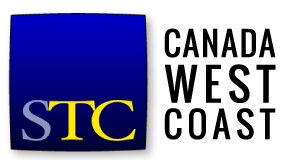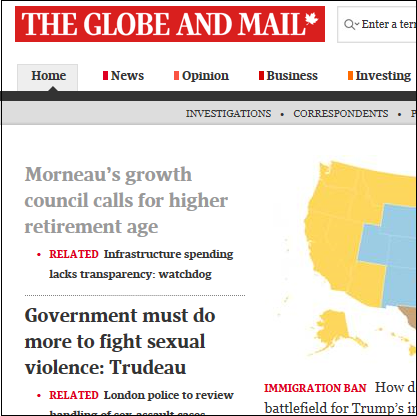The tech writing world rarely intersects with the news world, but news writing is still a handy skill to have. You might find yourself in a communications role – having to write a news release or announcement for a website, for example.
Traditionally, the purpose of a news release was to attract the interest of a newspaper, radio station, or TV station, resulting in a followup call or interview, leading to a story about the news item. You sent out “news” you thought would interest the media, and hoped they would run a story based on your story.
But now, thanks to the internet, organizations of any size and shape can write and then immediately publish news releases on their websites – there’s no need for gatekeeper media, reporters, and editors.
What is news?
From a media perspective, news is any change in the status quo – an event, an announcement, a decision, often by powerful people.
News is an event people are interested in. Beyoncé has twins, and it’s news. In television, events that generate dramatic visuals, like fires, bombings, plane crashes and other disasters, tend to dominate a newscast. “If it bleeds, it leads.”
News is something that affects people and provokes a reaction – they’re shocked, surprised, amused, pleased or angry.
The media don’t care if news is good or bad – indeed, bad news is often more dramatic than good news.
Most organizations, however, focus on good news, for obvious reasons. Good news enhances their brand. They want to tell the world that they’ve released a new product, appointed a new CEO, signed an important new customer, created a new service, or opened a new office.
News writing style
The rules for writing news? Be simple, brief and clear. No flourishes or fancy words. Stick to the facts. Use short to medium length sentences and short paragraphs, if possible.
Structure
The structure of a technical document might be something like:
Intro
Content
Conclusion
OR
Intro/context
Step by step procedures
The end
News writing is different because it tries to grab the reader’s attention (you can’t assume you have the reader’s attention, the way you might with a user guide). It assumes the reader will probably not finish the story.
So the structure of a six-paragraph news story (or news release) looks like this:
1st paragraph: Lead – most important facts
2nd to 5th paragraphs: some details and quotes – medium important
Last paragraph: Least important
In traditional newspaper writing, it’s assumed you can cut the story from the bottom to fit the physical space on the page. The least important information is at the end.
What is the lead?
Along with the headline, the lead or first sentence is the most important part of the news story. It must attract and hold the reader’s attention, and communicate the most important facts of the story.
The lead tries to answer five questions (aka W5): Who What Where When Why? And if you can sneak in How, you’ve scored a bullseye.
For example:
Last night a fire in a century-old apartment building at Hastings and Main in downtown Vancouver caused by a ruptured gas pipe killed two teenagers and sent 10 people to the hospital with third-degree burns.
Who: two teenagers, 10 people
What: fire and two deaths
Where: Hastings and Main, downtown Vancouver
When: last night
Why: ruptured gas pipe
Other real-life examples
One Canadian was killed and two more were injured after gunfire erupted inside a Mexican resort community popular with tourists.
Two men were in custody Sunday night after a mass shooting at a mosque in Quebec City.
These are stories about events.
Many news releases, though, are about announcements of some kind:
The federal Liberal government says Canada will not take in additional refugees this year, or suspend a deal that prevents migrants who arrive from the US from seeking asylum here, even though US President Donald Trump has said no new refugees will be accepted in his country for the next four months.
Here’s an STC example (full release here):
The STC Canada West Coast chapter is pleased to announce that six technical writing students in the Lower Mainland and Victoria will receive free 2017 student memberships in the STC.
Who: six tech writing students
What: student membership
Where: Lower mainland and Victoria
When: 2017
After the lead
After the lead sentence, you fill in the remaining facts of the story, in descending order of importance.
Sentence two – who are the students?
The six students are Phoebe Atienza from Surrey; Owen Schellenberger from Victoria; Jay McKiernan from Port Coquitlam; and Amy Takeda, Alison Gilpin, and Chris Powell from Vancouver.
Sentence three – what did they do to qualify?
To qualify for the sponsorship, students had to be enrolled in a technical, business or professional writing program at the post-secondary level and complete an application form that included a short essay on why they wanted to become student members of the STC.
The story could end at this point and still make sense.
Sentence four fills in a little more detail about the students:
Jay, Alison, Amy and Chris are enrolled in BCIT’s Technical Writing Certificate program. Phoebe is in the Business and Technical Writing program at Vancouver Community College. Owen is working towards an Ontario College Graduate Certificate, Technical Writer, at Algonquin College in Ottawa.
The last two sentences feature quotes from Amy. This personalizes and authenticates the story. Personal testimony can have tremendous power in a news story. Would you rather hear the reporter summarize the impact of the Fort McMurray fire or hear it directly from a resident who barely escaped with her life?
You always want quotes in a news release if possible.
Amy, currently a volunteer with the Canada West Coast chapter, says the experience has been “very positive.”
“I’m meeting many inspiring professionals,” she says. “I’ve also attended informative events and had opportunities to learn more about the field of technical writing. As students we’re trying to gain confidence, learn essential skills and network with professionals, and I feel the STC provides a very supportive space for us to do so.”
Notice how the quote is set up in the first sentence, and then continued in the second sentence. When you have a full paragraph of quoting, try to get the name as close to the beginning of the paragraph as possible.
More on quotes
Quotes make a news story more appealing, more readable, by adding the words of an actual human being.
When you extract quotes from your notebook to use in the news release, you can edit the words of the speaker to eliminate “ums” and “ahs” and shorten the sentences. This is perfectly acceptable as long as you don’t change the meaning.
I use a little digital recorder for short interviews, as well as taking notes. This way you have a record (in case there is any disagreement about what was said) and of course you have the speaker’s exact words. You must still edit the quotes.
Finally, here are some key questions to ask when you’re doing an interview for a news story:
- Who are you?
- How do you spell your name?
- What is your title?
- What did you (or your organization) do?
- Why did you do it?
- What was the biggest challenge?
- How did you feel?
- What will the impact be?
- What is the significance of ….?
- Who is affected?
Additional resources
Guardian newspaper: News Writing
WikiHow: How to write a news report

